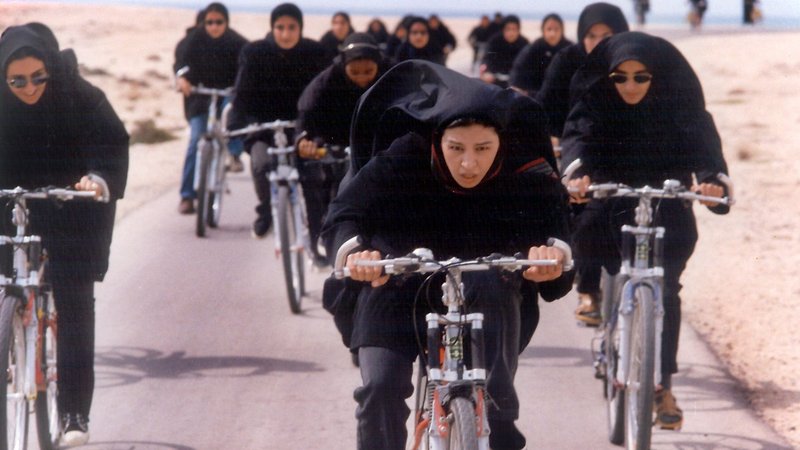
Screened as part of NZIFF 2001
The Day I Became a Woman 2000
Roozi keh zan shodam
At the start of the second episode of Marziyeh Meshkini’s triptych film, The Day I Became a Woman, a man forcefully gallops his horse across the screen in an ebullient diagonal composition. The man is in feverish pursuit of a woman who happens to be his wife, and who happens to be escaping from him with equal vigor and increasing speed on a bicycle. And as man and woman weave in and out of the buzzing fury of an all-female cycling race along the coast of Iran’s Kish Island, Meshkini’s film transforms into a pure, nearly dialogue-less exploration of color, form and movement through space.
Surely, there has been no more gifted succession of images yet on screen this year – earth-toned, pumping legs, black billowing chadors, and silvery, spinning spokes against a pastel, airy landscape as metaphor for inner, personal freedom. And Meshkini’s camera-eye – so vital and inquisitive that even the ultimate interruption of her protagonist’s forward motion cannot hold back the runaway energy of her tracking shots. Effortlessly, the movement keeps on, pulling us beyond the screen and along into episode three.
The remaining two-thirds of The Day I Became a Woman also impress, even if they lack the conjunctive dazzle of the cycling bit. In the opening vignette, a young girl pleads, poignantly, with her mother and grandmother, begging to spend the waning hours of her eighth year of life in the company of a beloved playmate (who happens to be a boy). Soon, the girl will turn nine, be viewed as a woman under the rules of Islamic law, and forbidden the social company of members of the opposite sex. In the finale, an elderly woman buys up several truckloads of furniture and other consumer goods like so much bulk candy, and then displays them on a public beach -- symbols of all the things in life she believes have been denied her. The progression is from a youthful cheer and warmth (reminiscent of dozens of similar childhood depictions in other contemporary Iranian films), to an absurdist fantasia of old age (in which electric appliances plugged into sand magically come to life) and, ultimately, to the consideration that the three women depicted might be but multiple representations of one unifying character – a woman for all seasons fractured and fragmented by Meshkini’s multiple narrative ellipses. — Scott Foundas, indieWIRE, 4/5/01